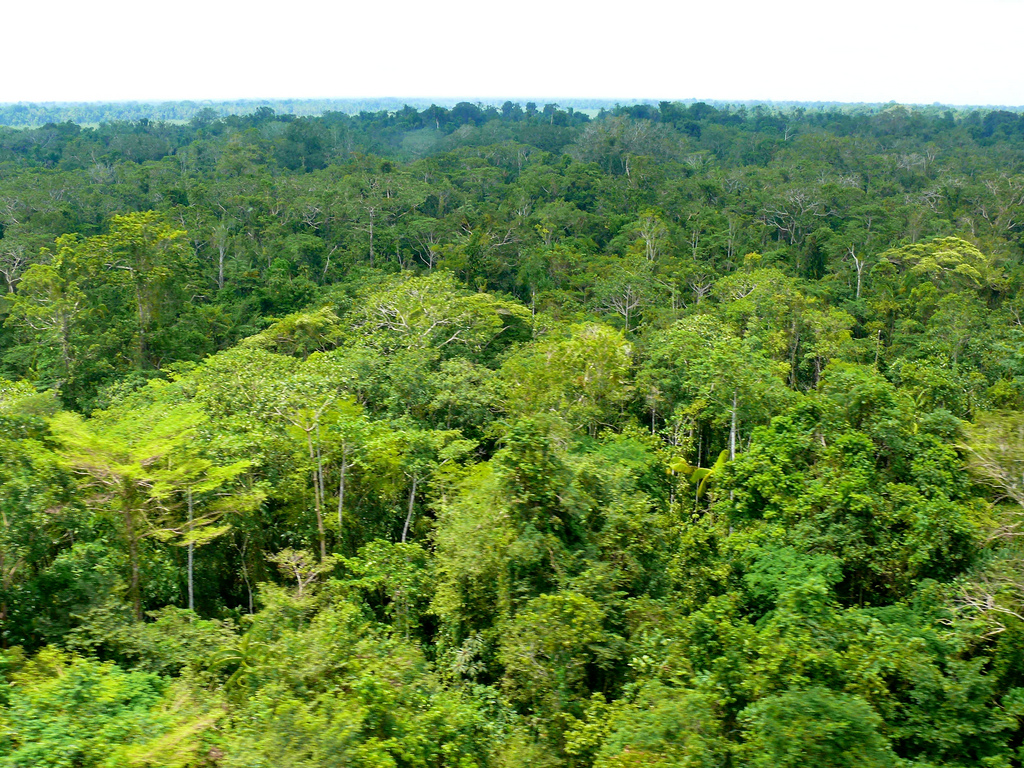Unmanned Aerial Vehicles (UAVs) or “drones” evoke a variety of responses from people ranging from anger over privacy invasion to awe over the new perspectives on our world. But like the Force, drones are merely tools that can be used for either the Dark Side or the Light. My interest in drones is related to the valuable role they may play in forest assessment, utility vegetation management, and tree risk assessment, but the need to maintain human involvement remains paramount.
In December 2014, Tom Smiley of Bartlett Tree Experts presented on this topic at the American Society of Consulting Arborists (ASCA) conference in Palm Springs, California. Bartlett has been using drones to evaluate trees for disease and for general tree assessment in the UK and US.
A View of Charleston’s Angel Oak from an Aerial Inspection Device
There’s no doubt the topic is sexy. The unique bird’s eye perspective and the ability to see fine details high up in the tree are impressive. However, there are serious limitations both technological and legal. Here is a summary of salient points from his presentation:
Drone Flight at the ASCA Conference, December 2014
- Drones range in price from $50 to $500 on the low end to $2,000 to $3,000 on the high end. Bartlett has been using mid-range DJI models, the Phantom 2 and Phantom 2 Vision+, which run around $1,500. Options contributing to price include GPS, ease of control, quality of camera, ruggedness (important!) altitude range, image stabilization and quality of operator’s viewscreen (the operator on the ground can see what the drone sees via a live video feed).
- Applications for tree work include health inspections, risk assessment and guidance for view pruning. Other companies have been using drones for forest health assessment and utility line clearance surveys.
- Currently they are limited to 15-20 minutes of flight time, so it is vital to define your mission in advance on the ground before you begin.
- Use when the wind is less than 15 mph, as high wind causes the engine to work harder, wasting battery life.
- Keep the drone within visual range and close to the tree. Don’t fly over people and treat the air over private property as private. Don’t fly within 5 miles of an airport. GPS in the better units can locate these zones and will avoid them.
- Have a rescue plan – drones can get stuck in trees, as this video
- Oh, by the way, it’s actually illegal. Yup, you need permission from the FAA to legally fly drones for commercial purposes. Permission is currently granted only to public entities and universities. However, Congress has told the FAA to develop a plan to safely integrate commercial UAVs by September 2015. Regulations will likely restrict maximum altitude, time of day, and may even require a pilot’s license.
- Although flying UAVs for commercial purposes is not legal, the insurance industry is already looking ahead. Get insurance if you are going to use UAVs in your tree work.
Drone Inspection of Structural Hazards
Currently the ISA Tree Risk Assessment Best Management Practices (BMPs) recognize three levels of tree risk assessment. Level 1 is limited visual assessment, typically a drive-by or fly-over in which the arborist may locate the most extreme hazards in a large area, typically dead trees, uprooted trees and broken branches. Level 2, the most commonly used, is basic visual assessment of an individual tree from the ground, viewing from all angles or as many as possible.
In a Level 2 inspection, an arborist reads the “body language” of a tree to locate clues to potential hazards including fungal conks, cracks and splits, and structural defects that may lead to failure. If a Level 2 assessment turns up something requiring additional investigation, Level 3 advanced assessment methods may be used. These include drilling, coring, excavating (often using air or water to expose roots), or an aerial inspection, traditionally done using a climber in the tree.
Although drones are not discussed in the current BMPs, they would probably be useful for both Level 1 fly-overs and Level 3 aerial inspections. It’s important to stress, however, that advanced inspection toys are only as useful as the experience and knowledge of the arborist using them. Buying a drone, however nifty the idea, will not make us better arborists. Some professionals may be seduced and make the leap early. The rest of us will likely wait because as with all gadgets, the better and cheaper ones are yet to come.
Ellyn Shea is an arborist and consultant in San Francisco.
CIFOR / CC BY-NC-ND 2.0






I am presenting at ISA Orlando about UAVs in utility arboriculture, and giving an overview of what UAVs can do.
Before you make a decision about whether (and how) to invest, come see the latest – including a discussion about the recent FAA proposed rules and how they would affect your business.
Very Good